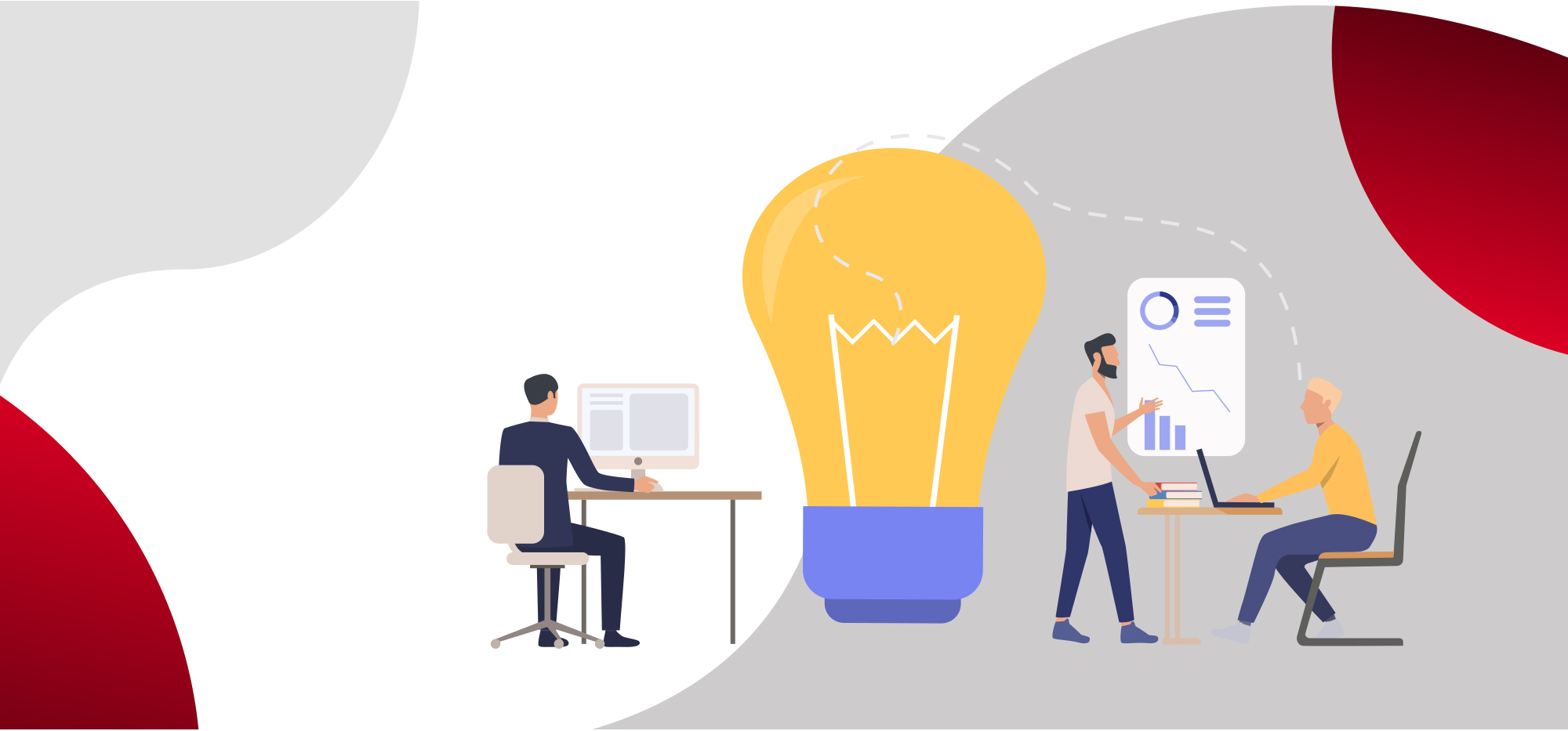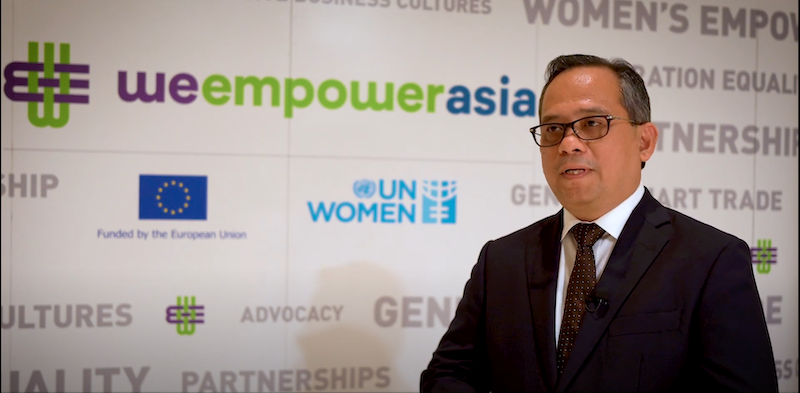Gender equality initiatives are increasingly receiving special attention from various organizations globally. More and more companies are aware of the gender equality priorities to encourage inclusivity, while increasing productivity, profitability, and ensuring talent sustainability.
One of the real benefits of gender equality that many organizations have experienced is the availability of talent pool to support the development and optimize the performance of organizations or companies. People are the resources most needed by all organizations. The loss of potential talent in strategic positions and divisions is a catastrophe for the organization, especially when it is related to gender issues.
Unsurprisingly, various organizations globally are embarking on transformation, change initiatives, and formulating roadmaps for business continuity, innovation, and productivity by adopting gender equality and women empowerment. The power of change quickly became a global movement initiated by UN Women and the UN Global Compact and the result is 7 framework principles for women empowerment.
The seven principles for businesses contain guidance in empowering women in the workplace, business places, and communities. These principles are 1) High-Level Corporate Leadership; 2) Treat all Women and Men Fairly at Work without Discrimination; 3) Employee Health, Well-Being and Safety; 4) Education and Training for Career Advancement; 5) Enterprise Development, Supply Chain and Marketing Practices; 6) Community Initiatives and Advocacy; 7) Transparency, Measurement and Reporting.
It should be noted that in various business sectors including information technology, the participation of female employees is still relatively small. In fact, the limited women talent pool is one of the biggest challenges faced by the IT industry. Microsoft Asia research in 2017 revealed that in the worldwide figures for STEM (Science, Technology, Engineering, and Mathematics) industry, there are only 20% of female talent, or 1 in 5 of women and men, working in the STEM industry.
In Indonesia, the female participation rate in the STEM industry is even smaller. According to BPS research in 2017, only 37.4% of women work in the formal sector. From that number, only 30% work in the STEM industry.
The limited women talent pool, especially in the IT sector, is also experienced by Telkomtelstra, a joint venture company between Telkom Indonesia and Telstra from Australia.
In Telkomtelstra, the company has started to develop gender equality initiatives through diversity and inclusion programs as part of its business strategy ever since the company was founded. Telkomtelstra has assessed that the impact of this initiative will greatly assist the company in terms of talent development, company performances and of course, will have a positive impact on the image/ reputation of the company.
Since 2016, Telkomtelstra released a pledge for parity program whose objective is to support gender equality in the workplace. There were 5 big targets launched at that time: ensuring that there were (as many) female candidates included in each selection process to fill the vacant senior positions, increasing the number of female talents to be recruited in areas where the number of women were still small, providing facilities for mothers breastfeeding in the office, providing work flexibility option and giving a father whose wife has recently given birth the opportunity to work from home for 2 weeks. By the end of 2020, Telkomtelstra was able to complete 4 of the 5 big targets. One big target that is still being improved is related to areas where the representation of female employees is still low, especially for jobs related to IT.
With continued efforts to implement gender equality, the results are starting to show. Overall, by the end of 2020, female employees in Telkomtelstra has increased to 35%. Despite the increasing trend, the big challenge to increase female talents in several, certain areas within the organization still remains, especially in the technology units such as IT, Product and also at the leadership level. In the technical/ technology sector, the percentage of female employees is only 25% from the target of 30%. Meanwhile, at the leadership/ management level, women’s representation is still 23% from the set target of 30%.
Measurement and Reporting
The 7th principle in empowering women in the workplace, business places and communities is Transparency, Measurement and Reporting. There are 5 stages in measurement and reporting. First, setting the context, this will be the foundation that underlies why Diversity & Inclusion is an important part of the company’s business strategy. Second, collecting the data and facts. Data collection was carried out through data from the HR department related to the participation of female employees in the recruitment process, promotion, training, attrition rate, etc. Other data sources are obtained through company’s internal surveys such as the annual survey, called “Employee Engagement survey” and other internal surveys that aims to obtain valuable information, especially from female employees. Other information channels are available through HR clinics, anonymous boxes, and existing whistleblower channels. There are also other channels that can be used to get input such as data from IT, feedback forms, etc. The third stage is the selection of tools and methodologies that will be used to process and analyze the data to obtain insights. The fourth stage, reports the results of the analysis (insight) periodically to management and to the employees. Stage 5, ensuring that the measurement and reporting process is done consistently, periodically and continuously as part of the business and of the company.
In realizing the importance of gender equality and women empowerment, Telkomtelstra also participates in the Gender Equality Assessment, Results, and Strategy (GEARS) as a pilot project in collaboration with the Indonesia Business Coalition for Women Empowerment (IBCWE). From GEARS, there are many findings that still require to be addressed in the future. These findings are valuable input for companies in planning initiatives and work programs this year (2021) to complete or provide the solutions to these findings. These findings from GEARS are the main basis for ‘Diversity and Inclusion’ in the Annual Operating Plan 2021′.
Interesting Findings
By analyzing the data that we obtained from the HR department, we found that the attrition rate of female employees who resigned from the company was 10%. From this number, 16% of female employees who resigned were due to family reasons, and it turned out that 75% of female employees who resigned for family reasons were young mothers who had just given birth to their first child. They have to give up their careers because of the need to stay at home in caring for and raising children. Of course, this finding is a very valuable input for the company. It is necessary to look for initiatives, programs and solutions in the company to reduce the attrition of women talent who possesses the ability and potential to be developed into future leaders of the company. This is one of the benefits of measuring and reporting when done seriously by the company.
Measurement and reporting need to be carried out continuously and important findings need to be followed up through concrete steps from the company to find solutions. In this case, Telkomtelstra formed a team called “Diversity and Inclusion Champion” to develop several programs and action plans in 2021 as an effort to increase women empowerment in the workplace. The long-run in supporting gender equality initiatives does require persistence, commitment and hard work from all parties in order to generate an optimal impact. The most important thing in an organization is to establish a commitment and support from top management, which is absolutely and urgently needed to bring the real change and results to the organization. Lastly, transparent measurement and reporting can be a first step to initiating improvements in terms of women empowerment in the workplace, which are expected to assist companies in developing strategies and action plans that will help companies become a gender-inclusive workplace in the future. (*)
The article was written by Ernest Hutagalung, CFO telkomtelstra


